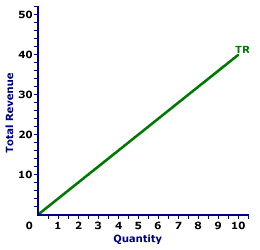An average revenue curve represents the relationship between the average price of a good or service and the quantity of that good or service sold. The average revenue is calculated by dividing the total revenue by the quantity of goods or services sold.
In perfect competition, the average revenue curve is a horizontal line at the market price because each firm is a price taker and has no control over the price of the product. In this type of market, firms can sell as much as they want at the market price and their total revenue will depend on the quantity sold.
On the other hand, in monopolistic competition, firms have some control over the price of their product because they have some degree of market power. In this type of market, the average revenue curve slopes downward because as the firm increases the quantity of goods or services sold, it must lower the price to sell more. This is due to the law of diminishing marginal returns, which states that as the quantity of a good or service increases, the marginal revenue (the additional revenue gained from selling one more unit) decreases.
In a monopoly, the firm is the sole producer of the good or service and has complete control over the price. In this case, the average revenue curve is the demand curve for the good or service because the firm can choose the price at which to sell each unit. The demand curve slopes downward because as the price increases, the quantity demanded decreases due to the law of demand.
It is important to note that the average revenue curve is different from the marginal revenue curve, which represents the change in total revenue from selling one more unit of a good or service. The marginal revenue curve is always below the average revenue curve because as the quantity of a good or service increases, the average price per unit decreases due to the law of diminishing marginal returns.
In conclusion, the average revenue curve represents the relationship between the average price of a good or service and the quantity sold and is important in understanding the pricing behavior of firms in different market structures. In perfect competition, the average revenue curve is a horizontal line at the market price, in monopolistic competition it slopes downward, and in a monopoly it is the demand curve for the good or service.




